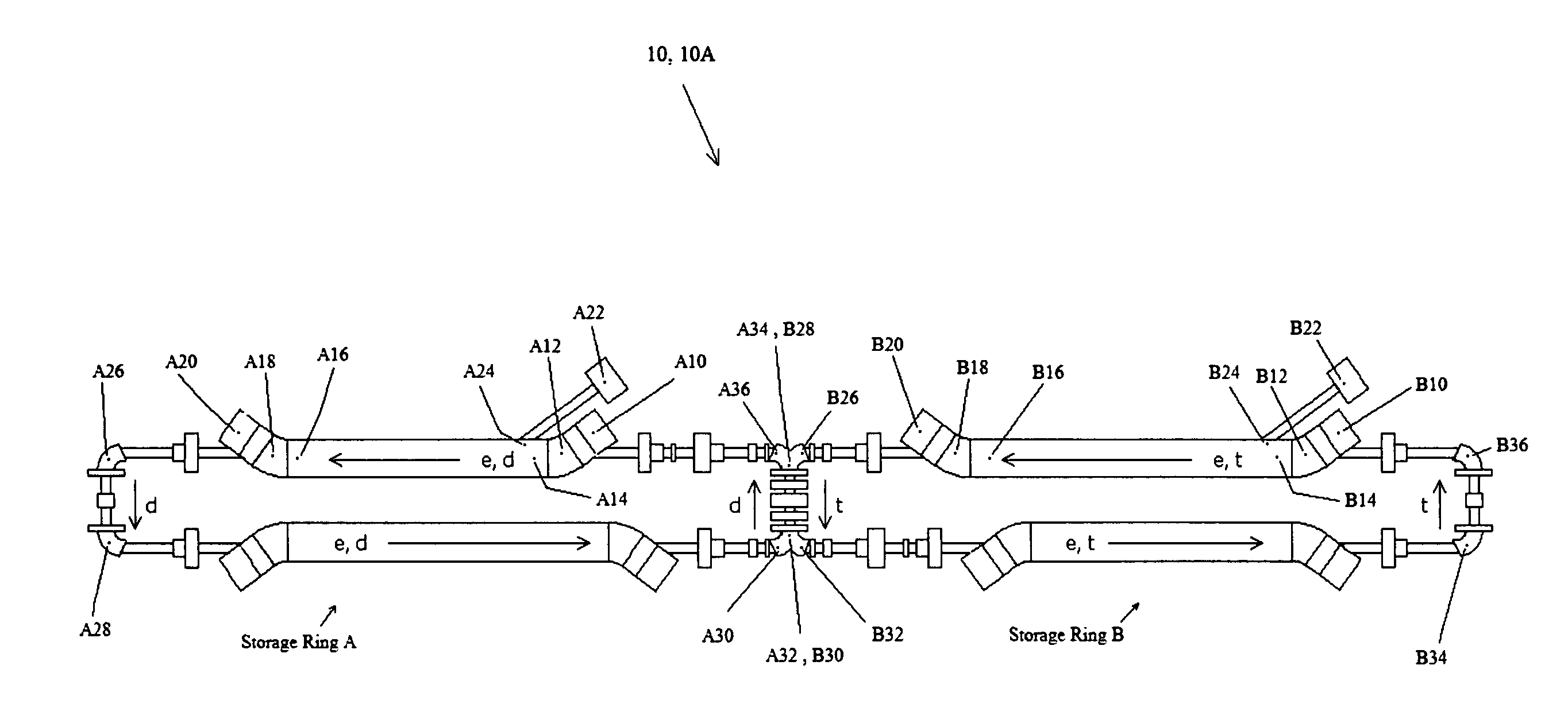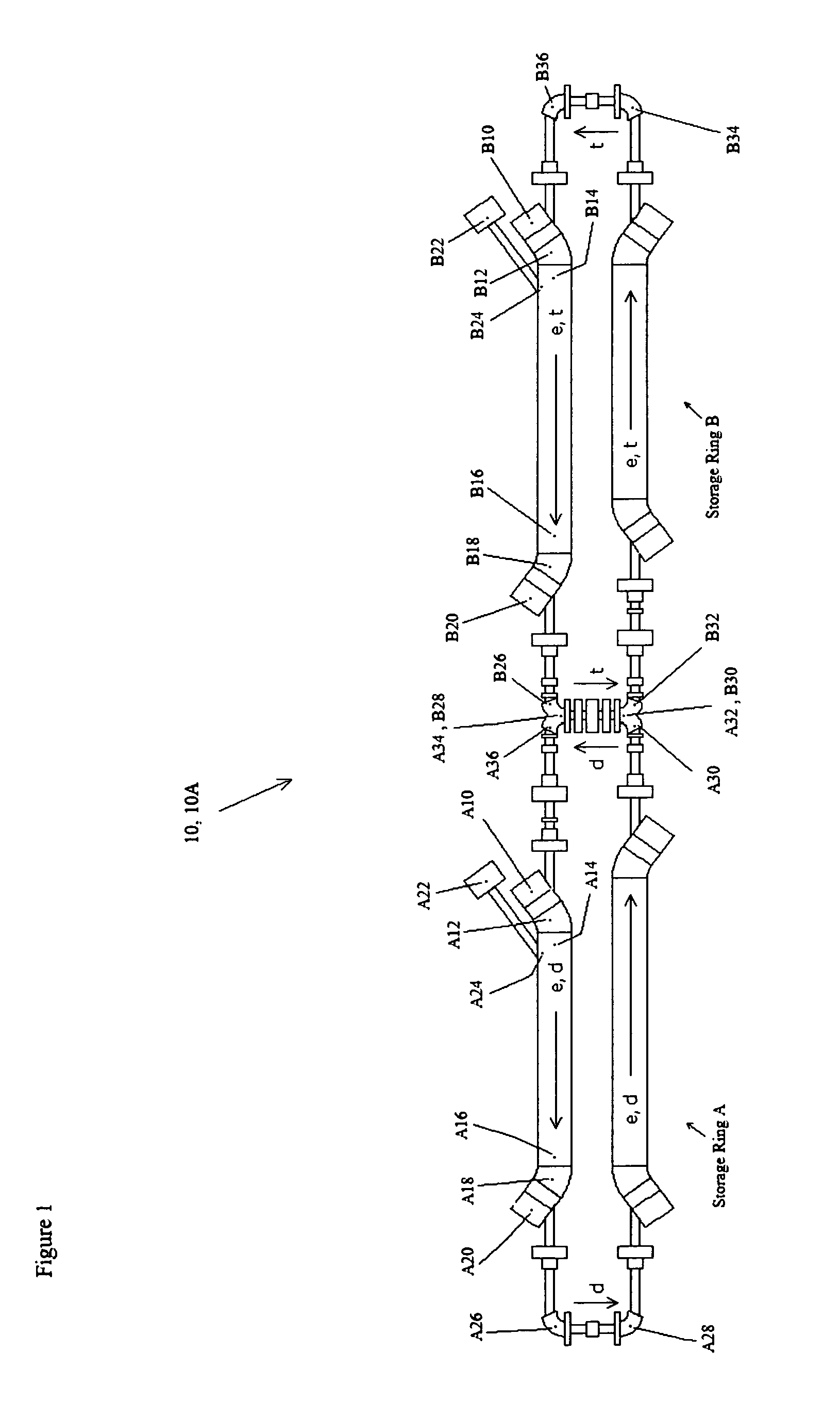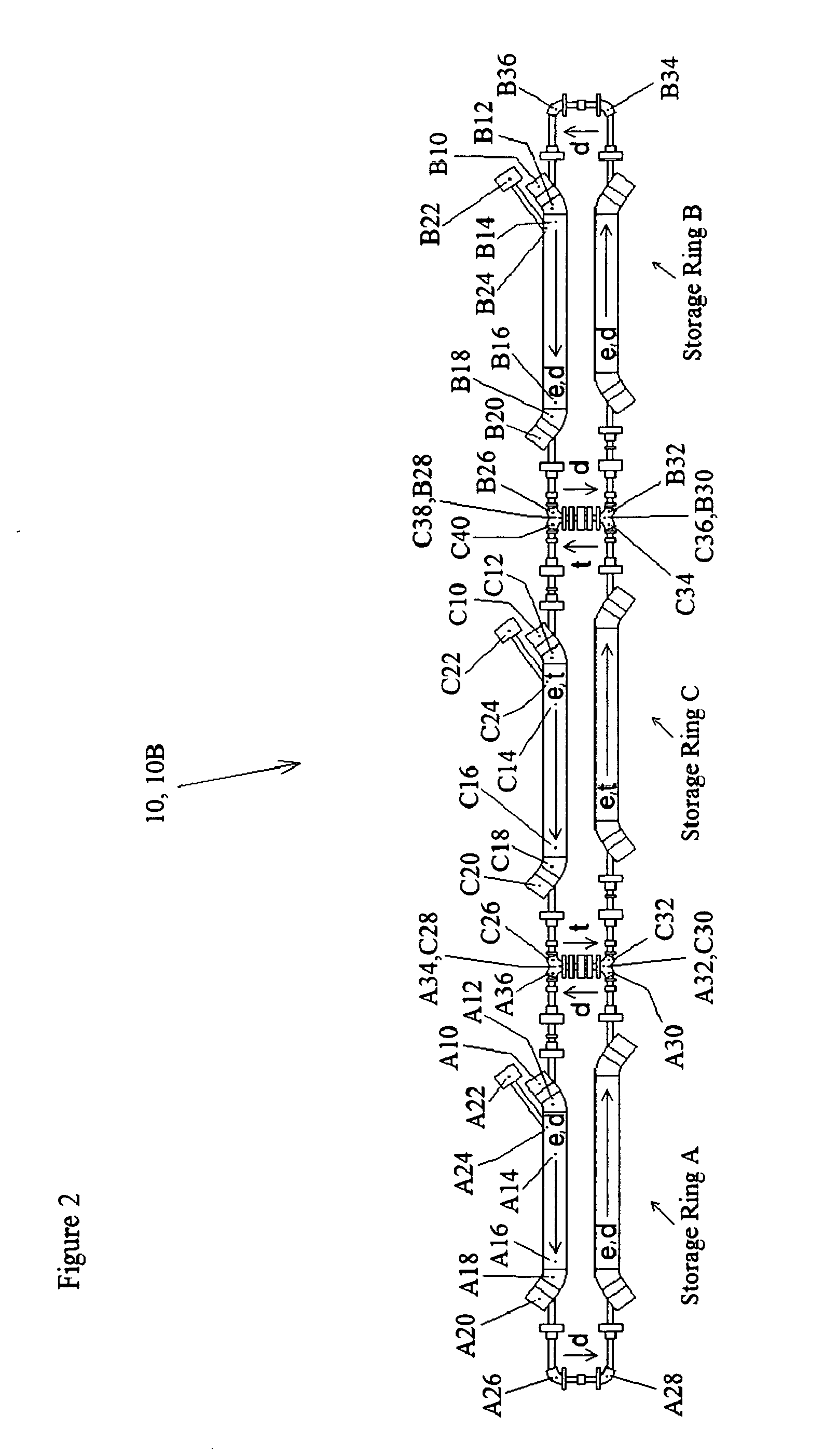Cellular, electron cooled storage ring system and method for fusion power generation
a fusion power and electron cooled technology, applied in nuclear reactors, greenhouse gas reduction, nuclear engineering, etc., can solve the problems of device not producing useful energy and loss of beam particles, and achieve the effect of large output fusion energy
- Summary
- Abstract
- Description
- Claims
- Application Information
AI Technical Summary
Benefits of technology
Problems solved by technology
Method used
Image
Examples
Embodiment Construction
Summary Description of Preferred Embodiment Operation
[0042]An electron-cooled intersecting storage ring system 10A employing two intersecting storage rings for achieving large amounts of fusion reactions is shown in FIG. 1. An electron-cooled intersecting storage ring system 10B employing three intersecting storage rings for achieving large amounts of fusion reactions is shown in FIG. 2. Preferred embodiments can contain four, five, or more intersecting storage rings. This description of the preferred embodiments will use deuterium and tritium as the example ions, but, as mentioned in the claims, other ions could be used in the invention as well.
[0043]The electron-cooled intersecting storage ring system 10 utilizes a combination of elements, including an ion source 20 for supplying ions 22, an electron source 24 for supplying electrons 26, a vacuum chamber 28 for containing particles within a region of low pressure, solenoidal wire windings 30 and torroidal wire windings 32 to provi...
PUM
 Login to View More
Login to View More Abstract
Description
Claims
Application Information
 Login to View More
Login to View More - R&D
- Intellectual Property
- Life Sciences
- Materials
- Tech Scout
- Unparalleled Data Quality
- Higher Quality Content
- 60% Fewer Hallucinations
Browse by: Latest US Patents, China's latest patents, Technical Efficacy Thesaurus, Application Domain, Technology Topic, Popular Technical Reports.
© 2025 PatSnap. All rights reserved.Legal|Privacy policy|Modern Slavery Act Transparency Statement|Sitemap|About US| Contact US: help@patsnap.com



